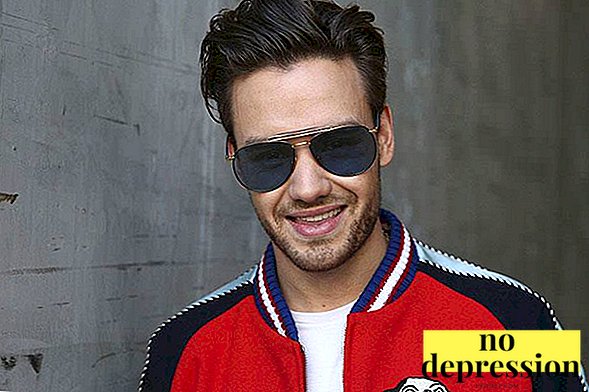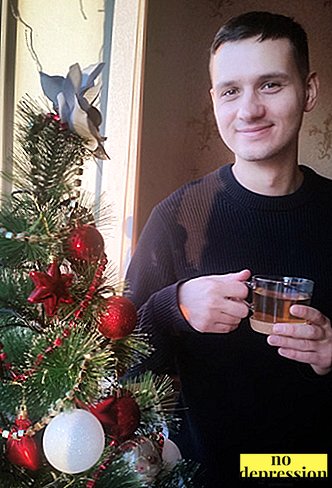Each person has a development of consciousness and self-awareness happens in stages.
The process begins in early childhood, when the child gradually realizes himself, analyzes what is happening.
It develops externally and internally, this process does not end, even when the child becomes an adult.
Brief concept

Consciousness - the highest form of generalized reflection of the laws of the surrounding world.
This is an internal model of the outside world, individual's own "I".
This concept includes thinking, emotions and feelings.
Self-awareness - a set of mental processes by which a person realizes himself as a subject of activity.
He analyzes his actions, represents the future, who he would like to be, what to achieve. Develop ideas about their own skills, hobbies, life positions. Going on personality traits formation.
Without self-awareness, a person is unable to set goals, achieve them, achieve success, choose activities that I would like to do professionally, learn and improve. Without this important quality, there is no development of the intellect.
Types and forms of consciousness in psychology
Exists several types of consciousness:
- Clear (clean). Adequate perception of others. It is characterized by meaningful answers, detailed speech, attention, the implementation of necessary actions. Opening the eyes occurs spontaneously. A person reacts quickly to any stimuli, the reaction is excellent. Orientation in space is preserved. It is important for a person how he looks and speaks, easily communicates.
- Unclear (dimness). A person is indifferent to his condition; he answers questions asked, but slowly, considering the answer for quite a long time. Attention and reaction are violated. It is difficult to concentrate on anything, thoughts are confused. All actions slow down.
- Stupor. The individual is poorly oriented in space, answers questions sluggishly and incorrectly, can instantly fall asleep, even if they talk to him. Possible numbness at any time. There is no interest in communication. The movements become melena, and the speech is illegible.
- Dullness. It is characterized by deep stupefaction. Almost all the time the individual is in a state of hibernation.
He sleeps a lot, you can wake him up only with shouts. Waking is short-lived, followed by a long period of sleep again.
It occurs at different times of the day, even if the person is not tired at all. Professional activity, study become impossible.
- Coma. Consciousness is completely lost, the person is in a deep hibernation. Loud screams, pain impulses, touches do not give results. There is no reaction to these actions. Reflexes are also completely lost. There is no ability to think, be aware of what is happening, answer questions and respond to the actions of others.
- Rave. There is a distortion of reality, consciousness is seriously disturbed. Delusional conditions adversely affect the life of the individual, can provoke increased anxiety, irritability and conflicts with others. No ability to think adequately. There may be acts that can not be explained.
- Hallucinations. This is visual and auditory distortion. A person begins to see or hear what is not really there. Strange sounds and images lead to a bad mental state, give rise to various internal disorders, do not allow to focus on reality.
The level of anxiety increases, there is more fear and nervousness.


What are the forms of consciousness? Experts identify the following forms:
| Individual | These are personal values, opinions, ideas. Own perception of public and historically established foundations. Each person has his own set of traits and characteristics, so each is unique. |
| Public | The spiritual life of society forms the social consciousness. It includes customs, traditions, customs. From childhood they are taught a person, helping the child to adapt to society. Closely connected with ethnic groups, it takes everything positive from them. |
| The theoretical level of social consciousness | This is the connection between social psychology and ideology. The first reflects the external manifestations of social reality, and the second deeply penetrates into the essence of what is happening. |
| Routine | Human consciousness is directly intertwined in the daily lives of individuals. The issues that a person faces daily in usual situations are touched upon: housekeeping, separation of duties in the family, perception of oneself in the role of mother, father, sister, brother. |
| Bulk | It consists of many units: at the same time the crowd and each person in it are considered. Characteristic of social and political movements. The feelings, attitudes and judgments of the masses depend on what is happening in society. Mass media, public leaders, great personalities, whose opinions are heeded, have a powerful effect on the masses. |
Psychologists call three types of consciousness:
- Public. Formed under the influence of society from a very early age, as soon as a person falls into the group of other people: kindergarten, school, sports clubs, clubs. He learns to behave in a certain way, to understand the foundations of society, to conform to it, not to overstep certain boundaries.
- Historical. The personality is influenced by the past of mankind, important events, traditions, historical facts. It forms internal beliefs, opinion.
- Political. A person tracks the political mood in the country, the world, analyzes events, political views are formed.

Self-consciousness and its types
Self-consciousness is different from consciousness. He identified two types: public and private. Public arises when a person understands how he appears in the eyes of other people.
This is especially acute when a person is in a group of people, they pay attention to him, there is a desire to please others, to look in a certain way.
There is a desire to follow social norms, but leads to anxiety. The individual begins to worry that he is not perceived as he wants.

He is afraid that they will no longer communicate with him, they will begin to insult him, they will not accept him in the team.
The private arises when a person aware of some aspects of his own "I" experiencing certain feelings as a reaction to what is happening around.
For example: an unpleasant feeling appears in the stomach when a person is not self-confident, is afraid of control work, or the heart trembles at the sight of a loved one.
Exists four forms of self-awareness:
- Self-knowledge. A person knows himself, analyzes his actions, opens up new sides and opportunities in himself.
On their basis, goals, tasks and dreams that are to be realized in the future are formed.
- Self control. Based on internal beliefs, principles. A person tells himself when to stop, not to cross certain boundaries, to follow the norms accepted in society. There is a control of emotions, feelings.
- Self-esteem. The individual considers himself, includes knowledge of himself, determines his significance. Based on the success of the work done themselves are assessed.
- Self acceptance. A person is aware of his advantages and disadvantages, accepts himself as he is. He understands that the ideal is unattainable.

Experts call three images of "I", which are products of self-awareness:
- I am real. The person is aware of what is in reality, what features and characteristics it possesses.
- I'm ideel. There is an idea of what to do if you were able to realize your capabilities and talent, to succeed.
- I am fantastic. This is an idea of an unreal “I”, which is unattainable due to the lack of possibilities. It can be fabulous, fantastic images, when a person endows himself with super abilities, he assumes that he could cope with overwhelming tasks.
Self-consciousness has several functions.:
| Function name | Value |
| Ensuring internal consistency | Self-consciousness does not let in all external factors, but only those that correspond to at least one feature of the internal “me”. It regulates consistency, prevents internal conflicts. |
| Interpretation of individual experience | The nature of the perception of events. It treats not only their behavior, but also the actions of other people. There is an assessment of current events. |
| Defining expectations | The man is trying to predict what should happen in the future. This happens when making decisions, seeing the situation at a certain angle. Different situations are analyzed. |
TO means of self-awareness include writing texts in a personal diary, watching movies and performances, studying psychology, using psychological tests, reading books.
The person in various ways tries to understand himself, to improve himself, to discover new aspects in himself, previously unexplored. There is a continuous own development.
Appears simplest primary form of self-awareness at an early age when the child turns three years old.
It is then that the baby begins to realize itself, starts saying “i”, “my”, he has an opinion about others, there is a desire to talk with relatives.

He stops talking about himself in the third person or calling himself by name.
A child may refuse certain clothes or food, defending their interests.
He begins to realize that he does not like everything, preferences are formed, there is an initial stage of socialization, friends appear.
Consciousness and self-awareness is two close conceptswhich play a huge role in the process of personality formation, its development.
They are characteristic of each person, include him principles, beliefs, opinions and self-awareness. These are complex and multilateral phenomena, without which man would base his behavior on instincts, not differing from animals.
About consciousness and self-awareness in this video:



